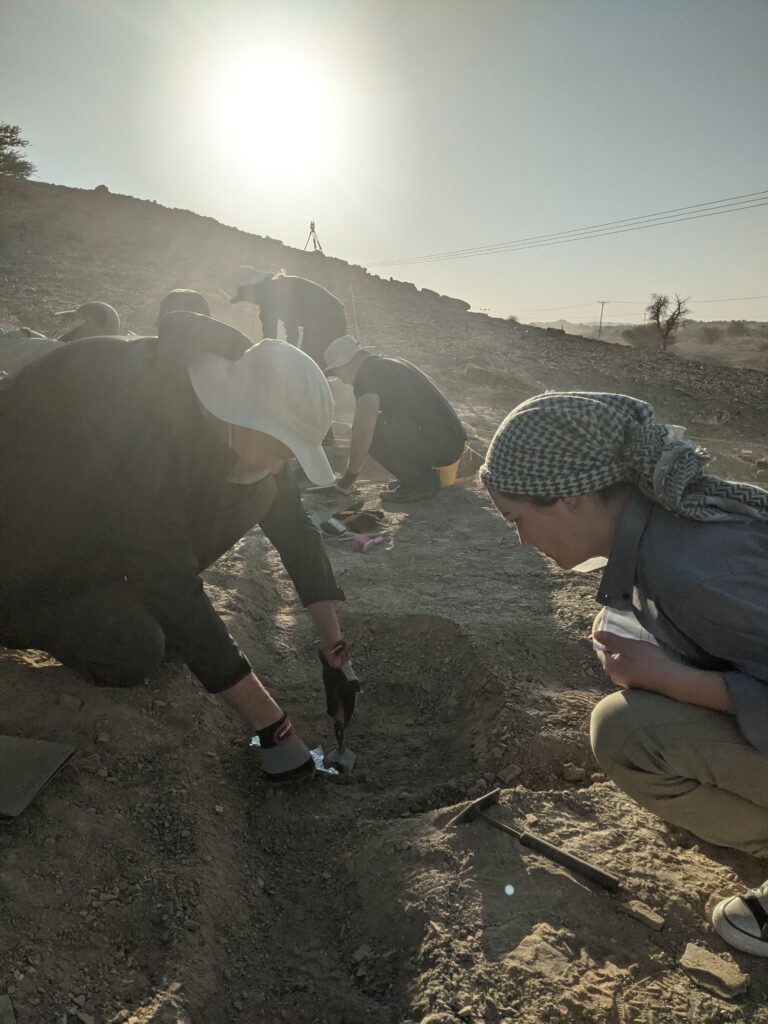
Unesco World Heritage sites of Bat, Al Khutm and Al Ayn are home to thousands of tombs and settlement buildings
New archaeological finds in northern Oman could change the way archaeologists understand the beginning of settled life in the Arabian Peninsula.
A team sponsored by Oman’s Ministry of Heritage and Tourism and made up of researchers from the New York University in Abu Dhabi and the University of Pennsylvania, found ovens, seeds and items that likely originated in Iran and India at the site.
The finds are the latest in a decade of discoveries in the Unesco World Heritage sites of Bat, Al Khutm and Al Ayn, one of the world’s most complete ancient landscapes.
The discoveries shed light on how ordinary people lived in the third millennium BC.READ MOREOman archaeologists find 4,000-year-old stone board game
The site, located south of Al Hajar Mountains, is famed for its distinctive beehive-shaped towers, thousands of tombs and other unusual structures.
“Bat is really an incredible site — it would be easy to work here for a lifetime and only scratch the surface,” Dr Eli Dollarhide, Humanities Research Fellow at NYU Abu Dhabi, told The National.
The team discovered carnelian beads from India, shell beads from the Gulf coast and grey pottery made in south-eastern Iran, providing evidence of international trade stretching back over 4,000 years to the Umm An Nar period, or early Bronze Age.
:quality(70)/cloudfront-eu-central-1.images.arcpublishing.com/thenational/BOAF2GFKVBBUDIR4ECZB6TGGSQ.jpg)
Many of the buildings in the settlement were near water, either overlooking a wadi or near a water catchment area. This, the team says, may have attracted diverse plant and animal species.
Mr Dollarhide said this discovery was a big surprise.
“We think that different areas at the site that today look like dry desert steppes were green and grassy and likely ideal places for feeding and keeping animals in the Bronze Age,” he said.
“This in turn is making us rethink the basic history of early life in the region.”
The findings at Bat potentially change ideas about how settled life began in the UAE and Oman, with the first villages and towns appearing along the coast and oases.
“Our research at Bat is showing however that Bronze Age people also lived in places far from these areas and some probably moved seasonally, taking advantage of the best natural resources available in different areas across the landscape,” Mr Dollarhide added.
“Bronze Age people built a resilient community at Bat that existed for almost a 1,000 years and had incredible knowledge about how to thrive with limited resources.
Alongside the evidence of a more cosmopolitan way of life, Mr Dollarhide said the team is closer to finding out about what inhabitants grew and ate, thanks to the discovery of hearths, ovens and ancient burnt seeds inside the houses.
Mr Dollarhide recently sent the ancient seeds for analysis in a lab, so “we have to wait and see to be certain about what people ate”.
The team is also taking a different approach to recreating how people may have lived at Bat in the past. Instead of looking at pottery fragments and imagining what pieces they may have been part of, the team is using local clay to create their own pottery and firing it using acacia wood, camel faeces and date palm fronds.
In addition to the continuing dig, the team is also launching an art and archaeology programme for local community members and schools to build connections and raise awareness of the rich archaeological past of Bat and south-eastern Arabia.


